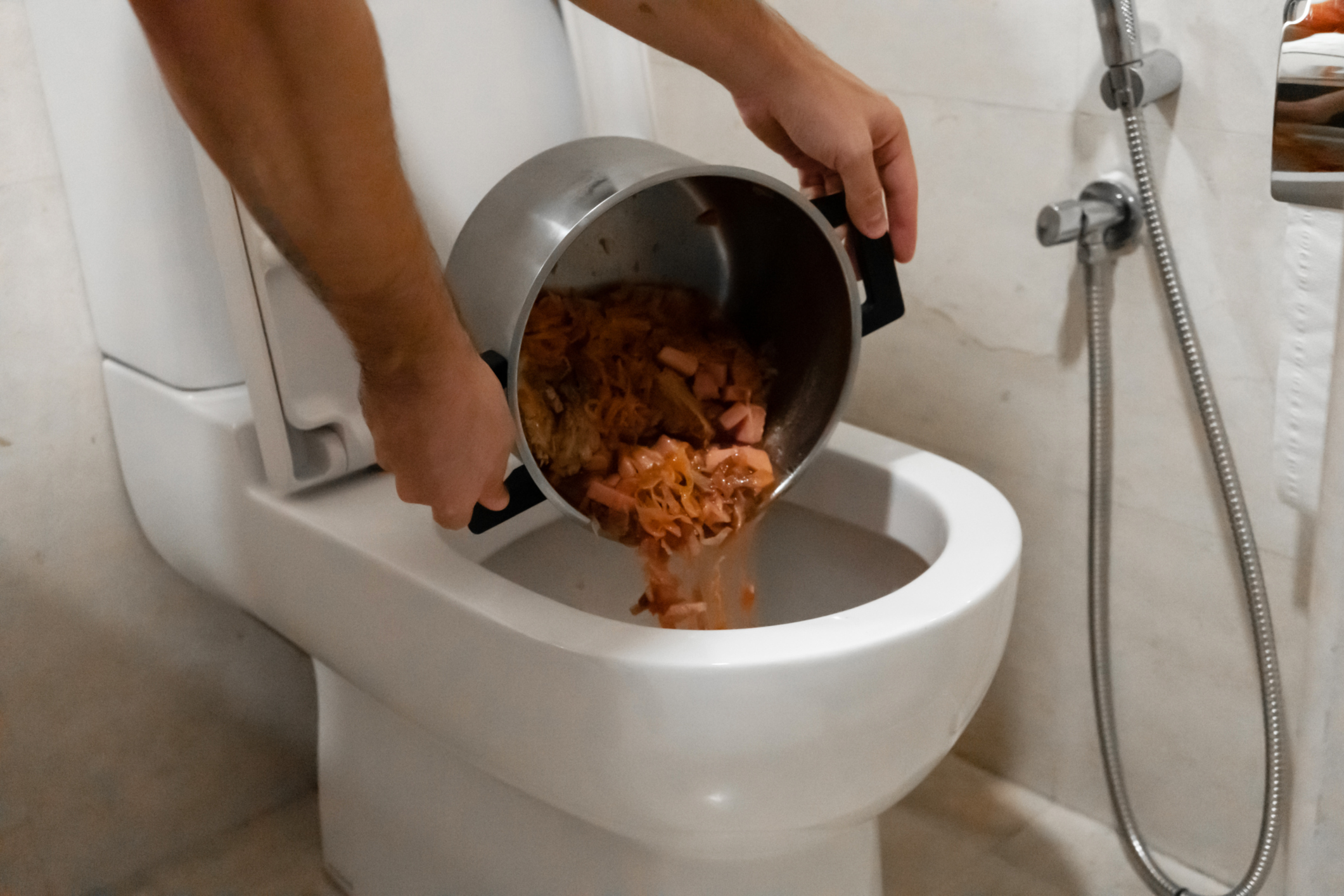Is it Permitted to Dispose of Food in the Toilet?
Is it Permitted to Dispose of Food in the Toilet?
Blog Article
The article underneath on the subject of Flushing Food Down the Toilet? is pretty much interesting. You should investigate it.

Intro
Many individuals are commonly faced with the dilemma of what to do with food waste, especially when it comes to leftovers or scraps. One usual inquiry that develops is whether it's all right to purge food down the bathroom. In this article, we'll delve into the reasons that individuals may consider flushing food, the consequences of doing so, and alternate techniques for appropriate disposal.
Reasons individuals might consider flushing food
Absence of recognition
Some people might not recognize the possible harm caused by purging food down the commode. They might wrongly believe that it's a harmless practice.
Convenience
Flushing food down the toilet might appear like a fast and easy option to taking care of undesirable scraps, particularly when there's no neighboring garbage can offered.
Laziness
In many cases, people might just pick to flush food out of sheer laziness, without taking into consideration the effects of their actions.
Effects of flushing food down the bathroom
Environmental impact
Food waste that ends up in waterways can add to pollution and damage marine environments. Additionally, the water utilized to purge food can stress water resources.
Pipes issues
Flushing food can bring about clogged pipes and drains, creating pricey pipes repairs and inconveniences.
Sorts of food that must not be flushed
Fibrous foods
Foods with fibrous appearances such as celery or corn husks can obtain tangled in pipelines and create obstructions.
Starchy foods
Starchy foods like pasta and rice can absorb water and swell, causing clogs in pipes.
Oils and fats
Greasy foods like bacon or cooking oils must never be flushed down the toilet as they can strengthen and create blockages.
Correct disposal methods for food waste
Utilizing a garbage disposal
For homes outfitted with waste disposal unit, food scraps can be ground up and purged through the plumbing system. Nevertheless, not all foods appropriate for disposal in this manner.
Recycling
Specific food packaging products can be reused, reducing waste and minimizing ecological impact.
Composting
Composting is an eco-friendly method to throw away food waste. Organic materials can be composted and used to enrich soil for horticulture.
The relevance of proper waste management
Lowering environmental harm
Proper waste monitoring practices, such as composting and recycling, assistance minimize contamination and preserve natural resources for future generations.
Safeguarding plumbing systems
By avoiding the practice of flushing food down the bathroom, house owners can avoid expensive pipes repair services and keep the integrity of their plumbing systems.
Verdict
To conclude, while it may be alluring to purge food down the toilet for benefit, it is very important to recognize the prospective repercussions of this action. By taking on correct waste management practices and disposing of food waste sensibly, people can add to healthier pipes systems and a cleaner atmosphere for all.
FLUSH FOOD DOWN THE TOILET?
FLUSHING FOOD CAN CAUSE BLOCKED DRAINS IN YOUR HOME
All of the plumbing fixtures in your home are connected to the same sewer pipe outside of your home. This outdoor sewer pipe is responsible for transporting all the wastewater from your home to the Council sewer mains. Even small pieces of food that go down the kitchen sink can cause problems for your sewer. It should therefore be obvious that flushing larger bits of food, such as meat, risks a clog in either the toilet itself or the sewer pipes. Flushing greasy food is even more problematic because oil coagulates when it cools, coating the interior lining of your pipes.
THE TOILET IS NOT A BIN
Food isn’t the only thing that people shouldn’t be flushing down the toilet. People use the toilet to dispose of all kinds of things such as tampons, makeup wipes, dental floss, kitty litter and even underwear. Water goes to great lengths to educate residents about the high costs and stress placed on wastewater treatment systems simply from people flushing the wrong stuff down the toilet. It costs taxpayers millions of dollars each year, and homeowners thousands in blocked drain repairs.
FLUSHING FOOD IS A WASTE OF WATER
Flushing food is a waste of our most precious resource - water. In June this year Level 1 water restrictions were introduced to protect water supply from drought conditions. Much of New South Wales continues to be affected by prolonged drought with recent figures revealing up to 97 per cent of the state remains in drought. Depending on whether you have a single or dual flush toilet, every single flush uses between five and 11 litres of water. In the current climate this is a huge amount of water to be wasting on flushing food that should be placed in the bin (or better yet, the compost).
https://www.jabplumbingsolutions.com.au/blog/can-you-flush-food-down-the-toilet

I ran across that piece on Flushing Food Down the Toilet? while doing a lookup on the search engines. Sharing is nice. You just don't know, you may just be helping someone out. Thank you so much for going through it.
Call Today Report this page